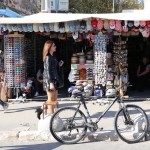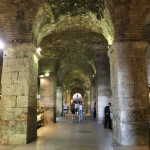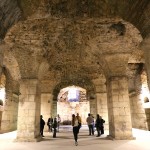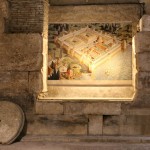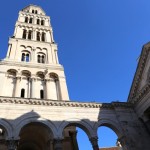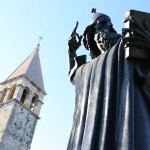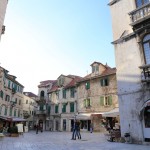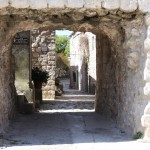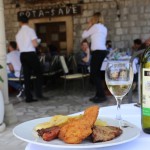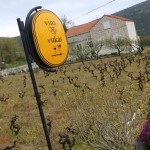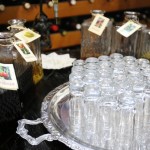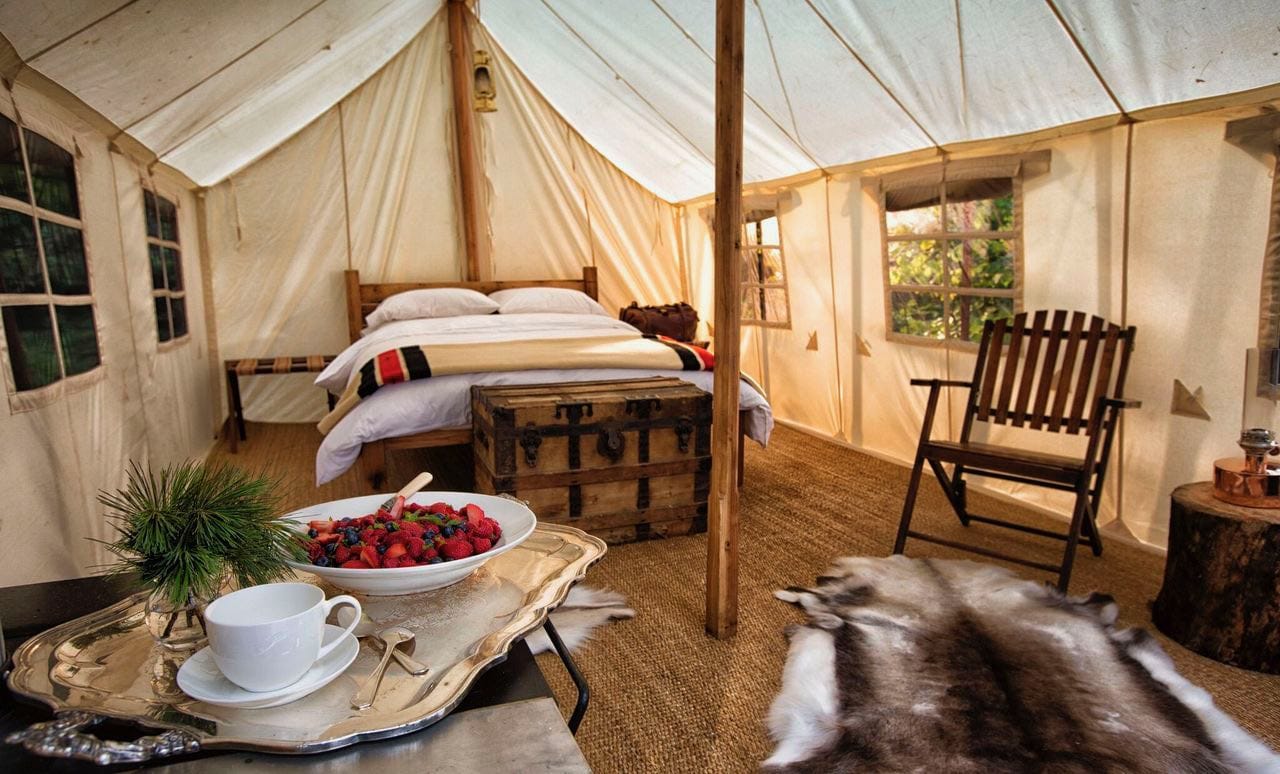Southern Dalmatia possesses one of Europe’s most dramatic shorelines, as the stark, grey wall of the coastal mountains sweeps down towards a lush seaboard ribbon dotted with palm trees and olive plantations. It is one of the most urbanized parts of the Adriatic coast, with suburban Split creeping earnestly along the shore in both directions, and the resorts of the Makarska Riviera strung together towards the south. The hub around which everything on this stretch of coast revolves is Split, a teeming, chaotic but ultimately addictive city that also serves as the Adriatic’s main ferry port.
I arrived in Split in the late afternoon via comfy Insight Vacations coach. We had spent our morning zig-zagging through rural Bosnia, in search of the Croatian border and once we arrived I was thrilled to enjoy my first taste of the sun-soaked Adriatic. Our visit to Split would be lickity split arriving just as the sun was beginning to set and departing the following morning after breakfast. We were dropped off at the breezy harbour to meet with our local guide who would spend the next 90 minutes adventuring through the city’s most famous landmark.
With its seafront cafes and ancient alleyways, shouting stallholders and travellers on the move, bustling, exuberant Split is one of the Mediterranean’s most compelling cities. It has a unique historical heritage too, having grown out of the palace built here by the Roman Emperor Diocletian in 295 AD. The palace remains the city’s central ingredient, having been gradually transformed into a warren of houses, tenements, churches and chapels by the various peoples who came to live here after Diocletian’s successors had departed.
Best place to start exploring the seaward side of the palace is Split’s broad and lively Riva. Running along the palace’s southern facade, into which shops, cafes and tiny flats have been built. The main approach to the palace from the Riva is through the Bronze Gate, a functional and anonymous gateway that originally gave to the sea, which once came right up to the palace. Inside is a vaulted space which once formed the basement of Diocletian’s central hall, the middle part of his residential complex, now occupied by arts and crafts stalls.
As the sun slid beyond the horizon dramatic shadows cast themselves across the ancient walls, a photographers delight. A swarm of tourists slowly dispersed below the Cathedral of St Domnius and I patiently waited for them to disappear, leaving the petite courtyard clear. I took a few snaps which gave the impression of quiet calm. A lesson for photographers that Patience is indeed a Virtue.
The following morning after breakfast we hopped into our coach and spent the day swerving south along Dalmatia’s jaw dropping coastline. I pressed my forehead against the window and watched as we zoomed past tiny fishing villages, towering yachts, lush olive orchards and a wide open island adorned Adriatic expanse.
The coast south of Split is probably mainland Dalmatia’s most enchanting stretch, with the mountains glowering over a string of long pebble beaches. Croatia’s most fertile land can be found in The Valley of Neretva, a hotbed of agriculture producing quality almonds, walnuts, citrus and figs. We made a quick stop on the side of the road to take in the beautiful views overlooking the valley while nibbling on dried figs, candied almonds and fresh meets juicy mandarin oranges.
We spent our afternoon in the stunning town of Ston, which was swallowed up by Dubrovnik in 1333, becoming the most important fortress along the republic’s northern frontier. The republic built huge defence walls stretching across the isthmus to the nearby harbour of Mali Ston, which became the northern bastion of a unified fortification system. Nowadays the twin town is known for its oyster beds – the aphrodisiac effect of the local molluscs make the place an ideal venue for romantic weekend getaways.
We explored Ston’s oyster farms via carefree cruise which took us puttering around the picturesque bay. Shortly after hopping onboard our bartender and oyster shucker extraordinaire poured glasses full of herb infused grappa which we shot back with unbridled enthusiasm. When our captain paused at a floating raft we were encouraged to hop off the boat and indulge in a quick education on how oysters are harvested in the open water here. Moments later we’re back onboard, squeezing sweet lemon over freshly shucked oysters while sipping on crisp glasses of locally produced white wine cuvee.
The Peljesac peninsula contains nothing but rocky, barren hills. The soil is generally poor but the generous sunshine is perfect for cultivating grapes. Introduced by the Greeks and then advanced by the Romans, wine production has a long history here. Today you’ll find acres of vineyards interspersed by olive trees throughout the region. The most celebrated wine is Dingac which is either white or red while other local stars include Postup and Plavac Mali. Recent DNA tests have revealed that California’s famed Zinfandel grape is the same (or closely related to) Plavac Mali, the grape we’d spend a serious amount of time sipping.
Just down the road on the other side of Ston sits family run Vina Vukas who have been in the wine business for over 100 years and produce about 1000 litres a year. We’re greeted by a friendly gent who invites us into his small cellar and starts us off by sipping through a variety of flavoured grappa’s which include sweet citrus, woodsy walnut and tart kiwi. He then offers a tutored tasting of the family’s top three wines which we sip through eagerly. We pause only to offer the odd gay giggle while nibbling through olive flecked bread and slices of fresh cheese which muddle in locally produced olive oil for three months. The nutty aftertaste is sublime.
You May Also Enjoy Reading…
Dinner at Poklisar Restaurant in Dubrovnik
Relais & Chateaux Lesic Dimitri Palace in Korcula
Exploring Croatia’s Isle of Korcula
